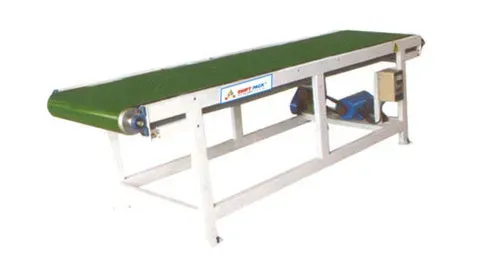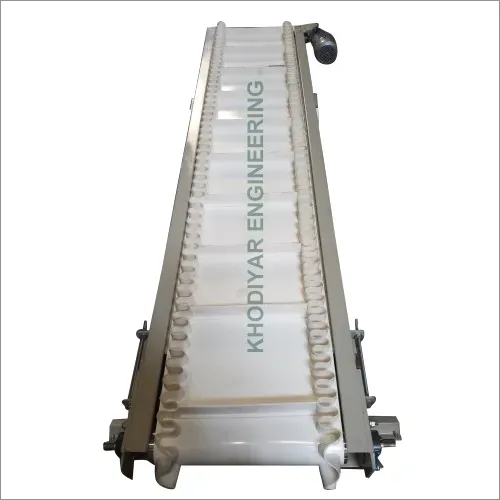Belt Conveyors: The Backbone of Manufacturing Industry

Belt Conveyors are exponentially used across manufacturing facilities, airports, warehouses, logistic facilities, etc., as one of the most feasible and effective material handling solutions. Belt conveyors installed in industrial and commercial settings are used on a large scale for transporting materials across production lines or stations. They ensure a continuous and systematic flow of materials, items, mechanical components, and finished or unfinished products, for high productivity levels, reduced downtime, and saving operational costs.
Key Advantages of Belt Conveyors
Higher Productivity and Efficiency Levels
Belt Conveyors, without downtime, streamline the continuous flow of materials across the production lines. Thus, they make a significant contribution towards increasing productivity and efficiency levels for manufacturing operations. Shredding machines also eliminate manual labor practices and save labor expenses.
Versatility and Flexibility
Belt conveyors are developed to be compatible with various spaces, whether a large warehousing facility or a confined manufacturing unit. The machine can be customized and installed in various layouts for moving materials systematically catering to numerous applications in industries such as automotive, food processing pharmaceuticals, and electronics. Moreover, shredding machines can transport a diverse range of materials which makes them highly versatile material handling equipment for any business.
Cost-Effectiveness
By reducing the reliance on manual labor for material handling, belt conveyors help lower operational costs. They minimize the risk of human error, increase throughput, and reduce the need for additional labor, contributing to significant cost savings over time.
Improved Safety and Ergonomics
Belt conveyors enhance workplace safety by reducing the need for manual lifting, carrying, and transporting heavy or bulky materials. This minimizes the risk of workplace injuries and improves ergonomics for workers, creating a safer and more comfortable work environment.
Consistent and Reliable Performance
Belt conveyors provide a consistent and reliable method of material transportation. Their ability to operate continuously and handle large volumes of materials ensures steady production rates and reliable performance, which is crucial for meeting production targets and deadlines.
Customization and Scalability
Moveable Belt conveyors can be easily customized to meet specific manufacturing needs. They can be adjusted in length, width, and speed to accommodate different product sizes and types. Additionally, conveyor systems can be scaled up or down as needed, making them adaptable to changing production demands.
Energy Efficiency
Modern belt conveyors are designed to be energy-efficient, with advanced motor and drive systems that reduce power consumption. Energy-efficient conveyors contribute to lower operational costs and support sustainability goals by minimizing the environmental impact of manufacturing operations.
Integration with Automation
Belt conveyors can be seamlessly integrated with other automated systems, such as robotic arms, sensors, and control systems. This integration enables synchronized operations, real-time monitoring, and optimization of the entire production process, leading to higher efficiency and precision.
Reduced Material Waste
The controlled and steady movement of materials on belt conveyors reduces the likelihood of damage and waste. By ensuring smooth and gentle handling, conveyors help maintain the quality and integrity of products throughout the manufacturing process.
Minimal Maintenance Requirements
Belt conveyors are designed for durability and minimal maintenance. With proper installation and regular inspections, they can operate efficiently for long periods without significant downtime. This reliability reduces maintenance costs and enhances the overall lifespan of the conveyor system.
Major Applications of Belt Conveyors
Manufacturing and Assembly Lines
Belt conveyors are integral to manufacturing and assembly lines, facilitating the movement of components and finished products. They ensure a continuous flow of materials, reducing manual handling and increasing production efficiency. Industries like automotive, electronics, and appliances rely heavily on conveyor systems to streamline assembly processes.
Food Processing
In the food processing industry, belt conveyors are used to transport raw ingredients, packaged goods, and finished products through various stages of production. They are designed to meet hygiene standards and can handle a wide range of food items, including fruits, vegetables, meats, and baked goods. Stainless steel and modular plastic belts are commonly used for their easy-to-clean properties.
Pharmaceuticals
Pharmaceutical manufacturing benefits from belt conveyors for the precise and hygienic handling of medicines, medical devices, and packaging materials. Conveyors ensure a clean and controlled environment, essential for maintaining product integrity and meeting regulatory standards. They are often used in tablet sorting, blister packaging, and bottle filling lines.
Mining and Quarrying
In the mining and quarrying industries, heavy-duty belt conveyors are used to transport bulk materials like ores, coal, and aggregates. These conveyors handle large volumes of material over long distances, improving the efficiency of material extraction and transportation processes. They are built to withstand harsh environmental conditions and heavy loads.
Logistics and Distribution
Belt conveyors are crucial in logistics and distribution centers for sorting, routing, and transporting packages and parcels. They streamline operations in warehouses and fulfillment centers by automating the movement of items from receiving docks to storage areas, picking zones, and shipping areas, thereby enhancing order processing speed and accuracy.
Agriculture
In the agricultural sector, belt conveyors are used to move crops, seeds, and feed in farms, grain elevators, and processing plants. They facilitate the handling of agricultural products, reducing manual labor and minimizing product damage. Conveyors are also used in post-harvest processing and packaging operations.
Airports
Airports utilize belt conveyors for the efficient handling of baggage. Conveyor systems transport checked luggage from check-in counters to sorting areas and then to the appropriate aircraft. They also move luggage from aircraft to baggage claim areas. These systems enhance the efficiency and accuracy of baggage handling operations.
Recycling and Waste Management
Belt conveyors play a critical role in recycling and waste management facilities. They transport recyclable materials through sorting, shredding, and processing stages, ensuring efficient material recovery and waste reduction. Conveyors handle a variety of materials, including plastics, metals, paper, and organic waste.
Construction
In the construction industry, portable belt conveyors are used to transport building materials like concrete, sand, gravel, and debris. They facilitate material movement on construction sites, particularly in areas where vehicles cannot easily access. Conveyors help improve site efficiency and reduce labor costs.
Retail and E-Commerce
Retail and e-commerce businesses use belt conveyors in their distribution centers to manage the flow of products. Conveyors automate the movement of goods from storage to packing stations and shipping areas, enhancing order fulfillment speed and reducing handling errors. They are essential for managing high volumes of orders in busy seasons.
How to Choose a High-Quality Belt Conveyor
Define Your Requirements
Identify material type, size, weight, and properties. Determine the conveyor’s purpose and assess environmental conditions like temperature, humidity, and exposure to chemicals to ensure suitability for your specific operational requirements.
Type of Belt Conveyor
Choose flat, modular, cleated, or specialized conveyors based on application needs. Match conveyor type to specific industry requirements, such as food processing, pharmaceuticals, or heavy-duty mining, for optimal performance.
Belt Material and Specifications
Select compatible belt materials, considering durability, resistance to wear, and lifespan. Ensure the belt dimensions match the size and transport distance of items, optimizing reliability and efficiency.
Conveyor Frame and Construction
Opt for durable frame materials like stainless steel or aluminum. Ensure robust construction for stability and minimal vibrations, with designs allowing easy maintenance and belt replacement to reduce downtime.
Load Capacity and Speed
Verify the conveyor’s ability to handle maximum material weight and appropriate speed to balance productivity and material handling efficiency, ensuring consistent and reliable operation.
Safety Features
Ensure the conveyor includes safety guards, emergency stop mechanisms, and compliance with safety standards. Prioritize features that protect operators and maintain a safe working environment.
Integration and Automation
Ensure the conveyor integrates seamlessly with existing systems like robotic arms and sensors. Look for automation features like real-time monitoring, automatic sorting, and load balancing for enhanced efficiency.
Explore More:


